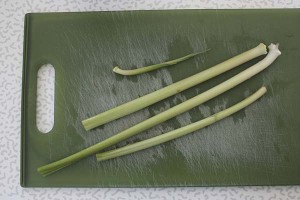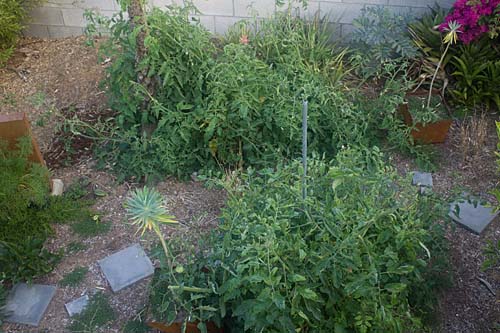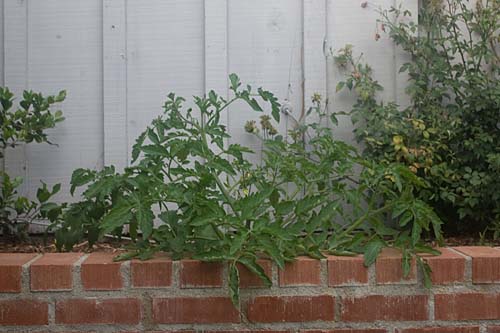Tomato plants are poisonous, right? Actually, not at all, according to a New York Times article that a coworker sent me on Thursday.
I’d bought into the common wisdom that tomato plants, along with potato plants and many other members of the nightshade family, contained poisons that rendered them inedible. The article stated, however, that the alkaloid in tomato plants, tomatine, has no history of poisoning humans or livestock, and that there was at least a brief record of the leaves being used in cooking, most notably in a tomato sauce served at the landmark Berkeley restaurant, Chez Panisse. Furthering the argument that tomatine is “probably not a killer,” Harold McGee, the article’s author, mentioned that the alkaloid is present in significant amounts in green tomatoes. There’s definitely a long history of eating those, often in fried form, often in the South.
I consider myself to be both a curious eater and a curious gardener, so I had to put this knowledge to the test. At the same time, I thought I’d also try my first preparation of “cossack asparagus,” the shoots of the aquatic cattail that I have growing in the pond.
First, I cut some tomato leaves off one of the plants. Next I trimmed some of the cattail shoots that had escaped into the pond from their pot. I removed the toughest outer leaves from the cattail shoots and rinsed them.
I chopped the cattail stems and the tomato leaves, and added them to a stir-fry of ginger and Japanese shishito peppers from the garden. If I were a little more adventurous, I’d have left off soy sauce so that I could have tasted the ingredients better. But I chickened out. In went a drizzle of soy.
The conclusion? I served a little side portion to John without telling him what the ingredients were.
“At first I thought they [the cattails] were green onions,” he said. “But they didn’t taste like them. And then I thought they lemongrass. But I was able to chew them.”
Such gushing enthusiasm! But after he made the reserved comments above, he agreed that the ingredients were indeed edible, and that we could have them again. And yes, I lived to write about eating both of these new ingredients.
Next time I’ll try simpler preparations so that I can better enjoy the individual flavors. Maybe a pesto sauce with raw tomato leaves. (I found that the cooking removed most of their flavor.) Or maybe I’ll try preparing a side dish of cattail stems steamed like asparagus.
One of my gardening resolutions for the year was to explore the lesser-known edible qualities of my garden plants. I’m glad that I did.





